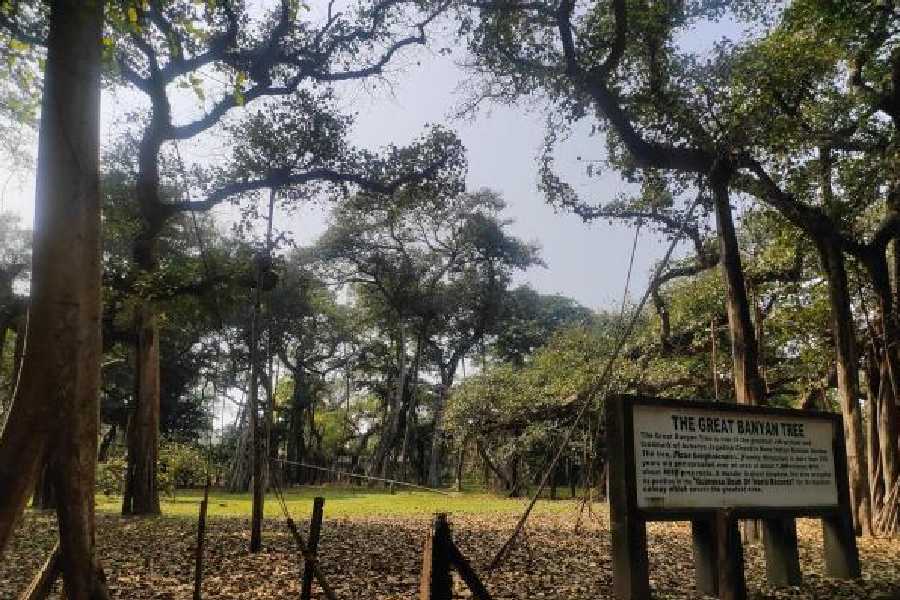The Great Banyan Tree at the AJC Bose Indian Botanical Garden, which lost a large portion of its canopy when Cyclone Amphan struck the city in May 2020, is yet to recover its green cover.
The storm that wrecked a number of trees at the Shibpur garden dealt a body blow to the 274-year-old tree by uprooting the prop roots and leaving a gaping hole in the northwest corner of the tree, which spreads across 4.67 acres.
The hole is yet to fill up four years down the line. The tree is no stranger to cyclones and had lost its main trunk to two cyclones in 1864 and 1867.
Scientists and officials at the Indian Botanical Garden are trying to regrow the canopy. Green shoots of prop roots are being redirected to the area that has lost its canopy by casing the thin emerging prop roots in bamboo.
“It will take another five to 10 years for the canopy to regrow,” said Devendra Singh, director of the Indian Botanic Garden. Officials at the garden are treating old prop roots to fight fungal damage, too.
It took months to address the damage caused to the 44 prop roots of the Great Banyan Tree and despite the best efforts of scientists, 20 of the oldest and heaviest prop roots could not be saved. The rest have now healed.
Care was taken to avoid the spread of fungal infection.
“It has almost lost its identity as the tree with the biggest canopy,” a senior scientist had said after assessing the damage to the garden in 2020.
While cyclones Aila (2009), Phani (2019) and Bulbul (2019) could do no major damage to this grandad of Shibpur, Amphan tore apart the clonal colony that appears like a dense forest rather than a single tree.
Cyclones that struck the garden in the late 19th century damaged its main trunk and branches, which led to the amputation of the main trunk in 1925 to keep the rest of the tree healthy.
Of the 15,000-odd trees at the garden, Amphan had damaged around 1,000. Many of the trees had been uprooted. Some of the trees have since been replanted, such as the 100-year-old Baobab tree.
The garden has only recently been cleared of the fallen trees and has made a significant drive to plant saplings and trees of various species. “We now have adequate ground staff who are being trained by scientists to take care of the grand old banyan tree,” said Singh.
